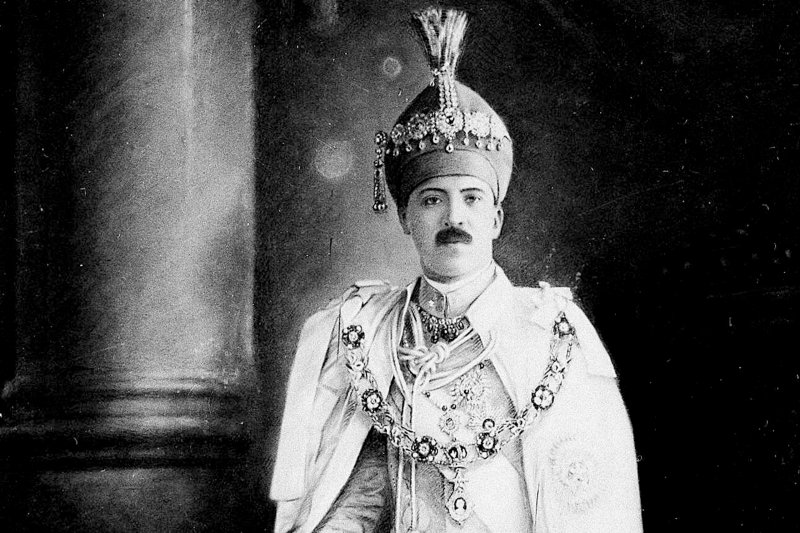Mir Osman Ali Khan
 Mir Osman Ali Khan, Asaf Jah VII (5 or 6 April 1886 – 24 February 1967) was the last Nizam (ruler) of Hyderabad State, the largest state in the erstwhile Indian Empire. He ascended the throne on 29 August 1911, at the age of 25 and ruled the State of Hyderabad between 1911 and 1948, until the Indian Union annexed it. He was styled as His Exalted Highness (H.E.H) the Nizam of Hyderabad, and was widely considered one of the world's wealthiest people of all time. With some estimates placing his wealth at 2% of U.S. GDP, his portrait was on the cover of ''Time'' magazine in 1937. As a semi-autonomous monarch, he had his mint, printing his currency, the Hyderabadi rupee, and had a private treasury that was said to contain £100 million in gold and silver bullion, and a further £400 million of jewels (in 2008 terms). The major source of his wealth was the Golconda mines, the only supplier of diamonds in the world at that time. Among them was the Jacob Diamond, valued at some £50 million (in 2008 terms), and used by the Nizam as a paperweight.
Mir Osman Ali Khan, Asaf Jah VII (5 or 6 April 1886 – 24 February 1967) was the last Nizam (ruler) of Hyderabad State, the largest state in the erstwhile Indian Empire. He ascended the throne on 29 August 1911, at the age of 25 and ruled the State of Hyderabad between 1911 and 1948, until the Indian Union annexed it. He was styled as His Exalted Highness (H.E.H) the Nizam of Hyderabad, and was widely considered one of the world's wealthiest people of all time. With some estimates placing his wealth at 2% of U.S. GDP, his portrait was on the cover of ''Time'' magazine in 1937. As a semi-autonomous monarch, he had his mint, printing his currency, the Hyderabadi rupee, and had a private treasury that was said to contain £100 million in gold and silver bullion, and a further £400 million of jewels (in 2008 terms). The major source of his wealth was the Golconda mines, the only supplier of diamonds in the world at that time. Among them was the Jacob Diamond, valued at some £50 million (in 2008 terms), and used by the Nizam as a paperweight.During his 37-year rule, electricity was introduced, and railways, roads, and airports were developed. He was known as the "Architect of modern Hyderabad" and is credited with establishing many public institutions in the city of Hyderabad, including Osmania University, Osmania General Hospital, State Bank of Hyderabad, Begumpet Airport, and the Hyderabad High Court. Two reservoirs, Osman Sagar and Himayat Sagar, were built during his reign, to prevent another great flood in the city. The Nizam also constructed the Nizam Sagar Dam and, in 1923, a reservoir constructed across the Manjira River, a tributary of the Godavari River, between Achampet(Nizamabad) and Banjepally villages of the Kamareddy district in Telangana, India. It is located at about 144 km (89 mi) northwest of Hyderabad. Nizam Sagar is the oldest dam in the state of Telangana.
The Nizam had refused to accede Hyderabad to India after the country's independence on 15 August 1947. He wanted his domains to remain an independent state or join Pakistan. Later, he wanted his state to join India; however, his power had weakened because of the Telangana Rebellion and the rise of a radical militia known as the Razakars, whom he could not put down. In 1948, the Indian Army invaded and annexed Hyderabad State and defeated the Razakars. The Nizam became the Rajpramukh of Hyderabad State between 1950 and 1956, after which the state was partitioned and became part of Andhra Pradesh, Karnataka, and Maharashtra.
In 1951, he not only started the construction of Nizam Orthopedic Hospital (now known as Nizam's Institute of Medical Sciences (NIMS)) and gave it to the government on a 99-year lease for a monthly rent of Rs.1, he also donated of land from his estate to Vinobha Bhave's Bhoodan movement for re-distribution among landless farmers. Provided by Wikipedia
-
1